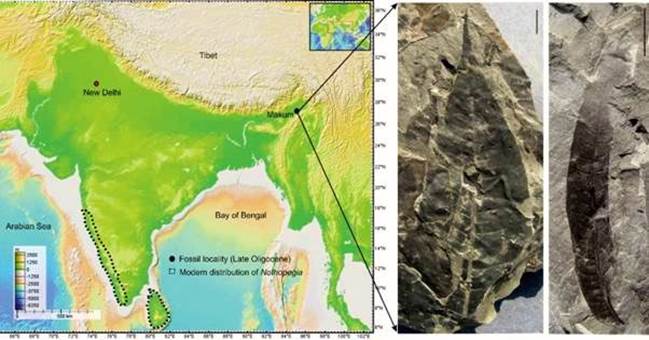Published on Jun 18, 2025
Daily PIB Summaries
PIB Summaries 18 June 2025

Content:
- A 24-million-year-old secret unearthed by the discovery of fossil leaves, found to be familiar in the Makum Coalfield of Assam
- A simplified method to synthesize nano-cups that can blaze the cancer with heat
A 24-million-year-old secret unearthed by the discovery of fossil leaves, found to be familiar in the Makum Coalfield of Assam
“This fossil discovery is a window into the past that helps us understand the future.” — Dr. Harshita Bhatia
Relevance : GS 3(Environment and Ecology , Research)

Key Discovery
- Fossil leaves found in Makum Coalfield, Assam.
- Dated to ~24–23 million years (Late Oligocene).
- Identified as genus Nothopegia.
- Now grows only in the Western Ghats.
Methodology
- Study by Birbal Sahni Institute of Palaeosciences (BSIP), Lucknow.
- Techniques used:
- Herbarium comparison
- Cluster analysis
- CLAMP (Climate Leaf Analysis Multivariate Program)
Scientific Insights
- Oldest fossil of Nothopegia found.
- Northeast India was once warm and humid.
- Similar to today’s Western Ghats.
- Proves tropical past of the region.
Climatic and Geological Changes
- Himalayan uplift changed the climate.
- Northeast became cooler and drier.
- Nothopegia vanished from the region.
- Survived in stable Western Ghats.
Multidisciplinary Approach
- Used paleobotany, systematics, and climate modeling.
- Reconstructed ancient environments.
- Showed plant migration and survival patterns.
Broader Implications
- Extinction and migration are natural, long-term processes.
- But today’s changes are faster, human-driven.
- Helps predict future plant responses.
- Warns of biodiversity loss under climate stress.
Conservation Message
- Western Ghats are a refuge for ancient species.
- Need to protect such biodiversity hotspots.
- Learning from the past can guide future action.
A simplified method to synthesize nano-cups that can blaze the cancer with heat
Key Discovery
- One-step synthesis of nano-cup shaped PEGylated semi-shells (SS).
- Designed for photothermal therapy (PTT) in cancer treatment.
- Offers minimally invasive tumour ablation using light-based heat.
Relevance : GS 2(Health ) ,GS 3(Technology)

Methodology
- Developed by INST Mohali, with ACTREC & IIT Bombay.
- Published in Communication Chemistry (Nature group).
- Uses room-temperature colloidal synthesis.
- Template: ZIF-8 (MOF) + ascorbic acid for mild etching.
Technical Innovation
- No toxic precursors, no high heat, or HF acid needed.
- Gold nanoparticles grow in place of etched ZIF-8.
- SS show strong NIR light absorption – ideal for PTT.
- Method is equipment-light, scalable, and eco-friendly.
Surface PEGylation Benefits
- Enhances blood compatibility, cryo-preservation, and stability.
- Ensures longer shelf life and safe injection.
- Increases circulation time and targeting ability.
Efficacy & Results
- Tested in vitro and in vivo (mice models).
- Effectively destroyed metastatic breast tumours.
- Boosted survival rate, reduced relapse risk.
- Non-toxic and high photothermal efficiency.
Advantages Over Traditional Methods
- Simpler, faster, and non-toxic synthesis.
- Better tumour targeting and tissue penetration.
- Higher therapeutic precision and stability.
Future Scope
- Chemo-photothermal combined therapy.
- Applications in SERS biosensing due to optical features.
- Promising for advanced cancer treatments and diagnostics.
